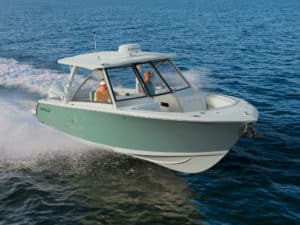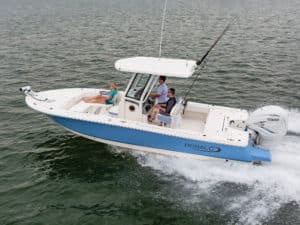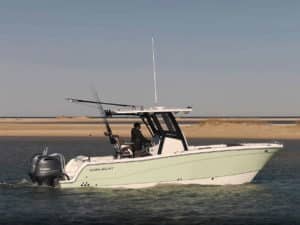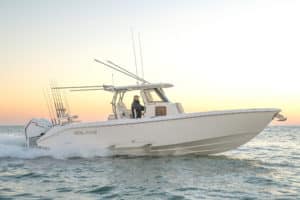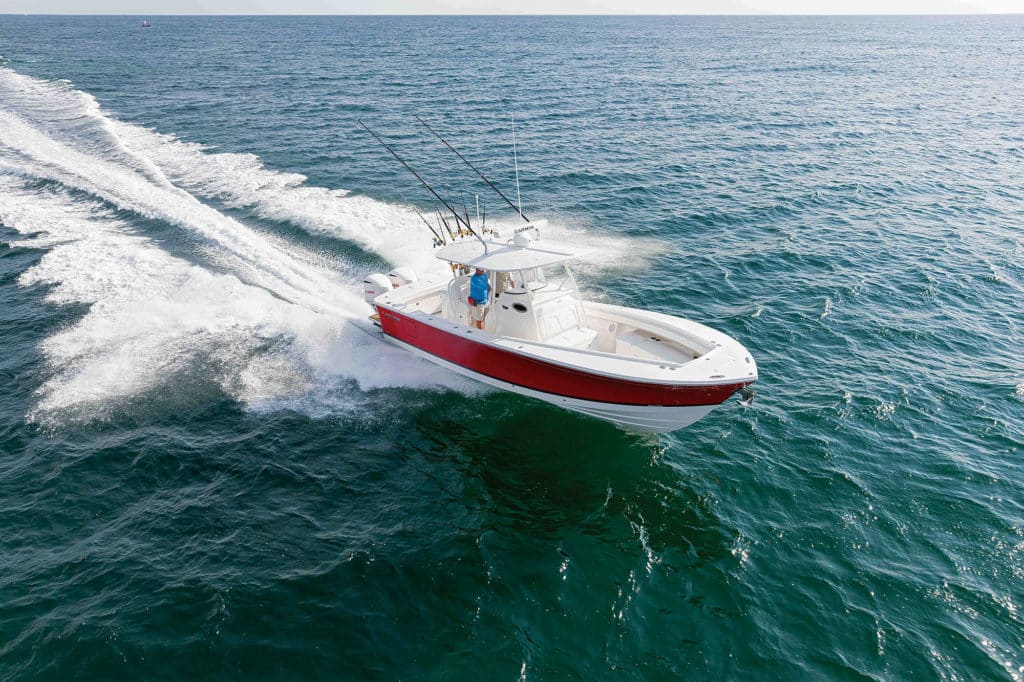
This entire review can be summed up by what I said to Don Ditzel, of New Jersey’s Comstock Yacht Sales & Marina, near the end of my August fishing trip with him, Capt. Tony Miller of Reel Drag Fishing Charters, and fellow journalist Gary Caputi: “The more you know boats, the more you’ll like this Regulator 31.”
Of course, such a short summation won’t do. You want all the details, and I’m happy to provide them. So let’s go back to the beginning.
That Famous Ride
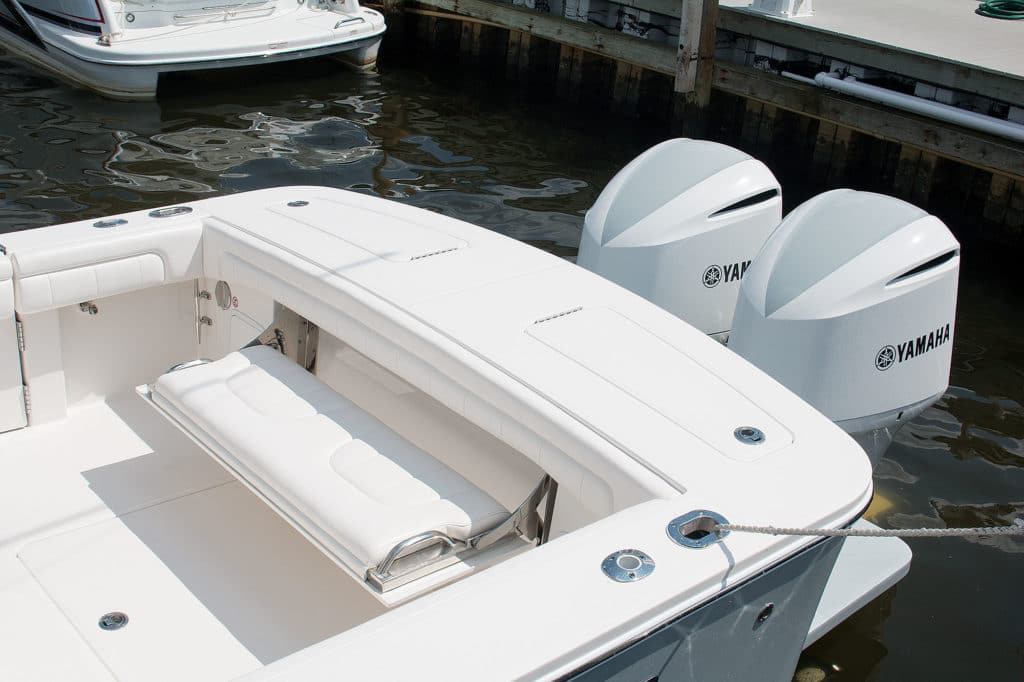
We left Comstock Marina’s docks as dawn broke on the Jersey coast. Ditzel maneuvered the 31 neatly out of its slip, using the Yamaha Helm Master joystick system to control the twin F300 outboards.
The engines ran almost silently as we idled down the fairway, engendering equally quiet conversation and camaraderie as we stowed gear in the rising light. What had been a disorganized pile of rods, coolers, water bottles, ice, cameras, safety equipment and foul-weather gear cluttering the dock just minutes before became entirely swallowed up by the Regulator 31‘s vast stowage and bevy of rod holders and rocket launchers. This is one boat where you won’t be tripping over loose gear or jamming lockers closed because they’re chock-full.
I appreciated the clear decks even more as we stopped to cast for stripers along a sedge bank favored by Miller. Caputi and I both had room to step atop the V-shaped bow seating to work our plugs. Had we been offshore, I might have installed the filler piece (which can transform into a table), making a complete casting platform out of the bow and thus providing even more secure footing to cast to bigger fish in open-water swells.
Unfortunately, the stripers didn’t eat. As we throttled up and blasted through the Manasquan Inlet breakers, we experienced an object lesson about secure stowage: Nothing came sliding past the helm, no hatch lids slammed, and the only thing that blew away was the spray deflected by the 31’s reverse chines and Carolina bow flare. Suffice it to say, the 31 did what I call “that Regulator thing.” The “thing” is this: As the boat crests a wave and begins to fall off a four-footer at 30 knots, instinct and experience cause you to white-knuckle something solid and brace for impact. Instead, slamming never happens.
The uninitiated need a few dozen waves to accept this concept, but eventually, everyone just relaxes. If you asked me how Regulator does it, I’d say it’s a combination of the deep-V hull and a builder unafraid to construct a heavier boat, knowing weight is an asset in relation to motion comfort.
Of course, naval architect and boat designer Lou Codega, who has been designing Regulator hulls for nearly 30 years, can explain the reasons for the stellar ride in nuanced detail. (Look for Codega at the Regulator display during some of the fall boat shows.)
Big and Roomy
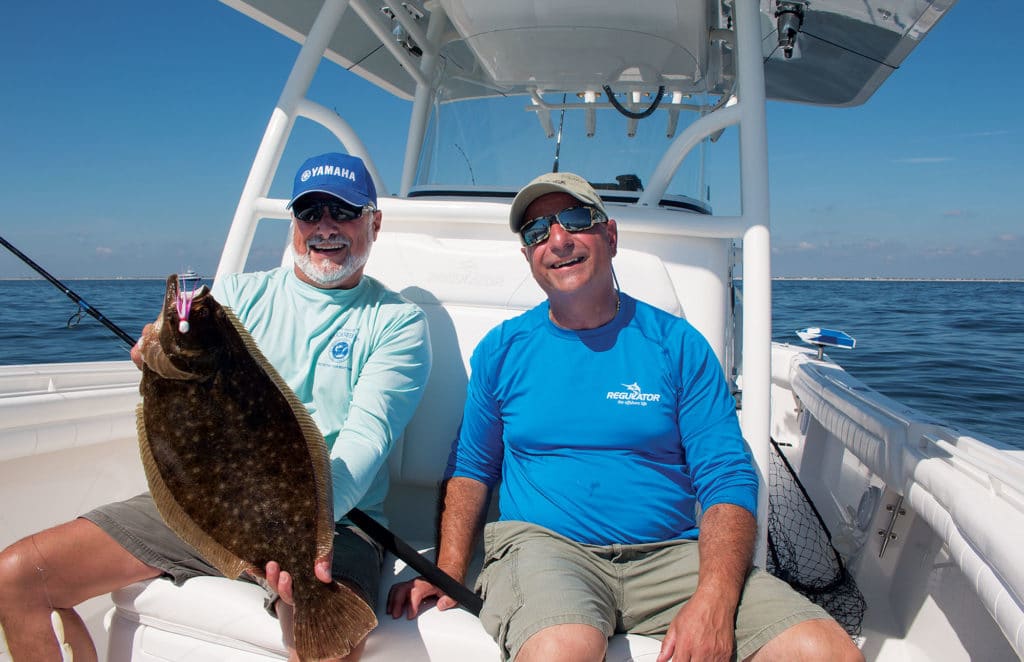
With Manasquan behind us and Ditzel at the helm, we headed south-southeast toward the fluke (summer flounder) grounds. As we approached the general area, we zoomed into a chart on one of the two 17-inch Garmin GPSMap 8617 multifunction displays at the center-console helm, meanwhile calling up a full-screen fish finder on the other.
Miller had a particular hump in mind that had been producing outsize fluke. Having such clear, enlarged images of both chart and sounder, with touchscreen control, proved invaluable in performing that crazed mental calculus all drift-fishermen must do: juggling the speed and direction of current and wind to set up the right drift.
It’s important, at this juncture, to note that Regulator measures boats differently than most builders do. More precisely, the Edenton, North Carolina, manufacturer names its models differently. The length of the transom bracket is not included in calculations for the model-designation number. Instead, the measurement from the bow to the end of the cockpit is used to describe the model. The length overall, which includes the bracket, is larger. For example, this Regulator 31 actually features a 36-foot-5-inch LOA.
So while this boat might be empirically the biggest 31 on the market, I didn’t need a tape measure to tell me so. A glance at the crew readying the cockpit for action told me all I needed to know about whether this boat was big for its size: It’s huge.
My test boat was fitted with a 40-gallon livewell, cutting board and sink aft of the leaning post, complementing the standard 36-gallon livewell in the transom. This module provided some stowage for hooks, lures and leader on one side, and featured a hatch lid finished top and bottom. (A full-on tackle center is also available.)
Aft of the module, I measured 90 square feet of cockpit space — plenty of elbowroom for Miller to prep his brined strip baits and tie rigs to precise dimensions honed by a lifetime on the grounds. Once on site, I headed toward the bow to drop a bait and check out numerous other fishing features.
Efficiency Quotient
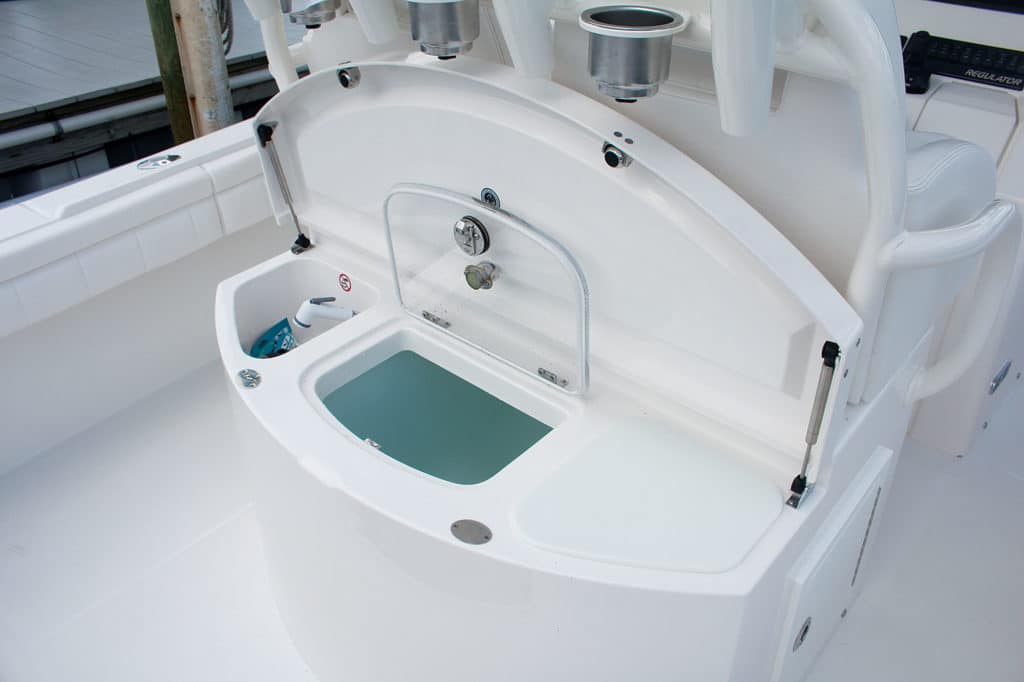
I found an in-sole box forward of the console that was more than deep enough to stow a cast net in a bucket. The fish boxes inside the bow’s V-seating drain overboard; gas struts keep their lids propped open, and foam gaskets create a watertight seal. I kept a camera in one of these hatches, and it lived through the day in fine fashion.
Pop-up cleats are an expected asset, but the ones on my test boat were large enough to tie off a chum bag and the bitter end of a flying gaff, while still offering enough unused horn to secure a tail-roped mako. The recessed bow rail provided a sturdy grab point, and its low profile made it easy for me to drop the rod tip to feed a fluke chewing the strip bait.
The bite turned on, and several small fluke came over the rail. Suddenly, Caputi hooked up to a heavier fish on a jig tipped with a strip bait. Miller netted the 7-pound fluke and swung it aboard.
After the requisite backslapping and photos, Miller iced the fluke in the transom fish box. The ice we loaded dockside had barely started to melt despite the 100-degree temperatures.
Back inside the inlet, I put the 31 through a battery of performance paces, including hard-over turns and emergency decelerations. The 31 never asked for more than a light grip on the wheel and inspired confidence at all times.
Carrying a half-tank of fuel, a full water tank, and a crew of four — and loaded for bear, tacklewise — the 31 hit a top speed of 53 mph. The gauges showed fuel efficiency better than 1 mpg at all speeds in the planing range, up to and including wide-open throttle, but I recorded the best efficiency at 26.4 mph, burning 19.5 gph and netting 1.35 mpg.
My test boat maxed out the tachometer at 5,700 rpm, but the 100-degree weather likely created an rpm loss. I’d expect higher rpm, and thus higher speeds, in less than brutally hot weather.
A Cut Above
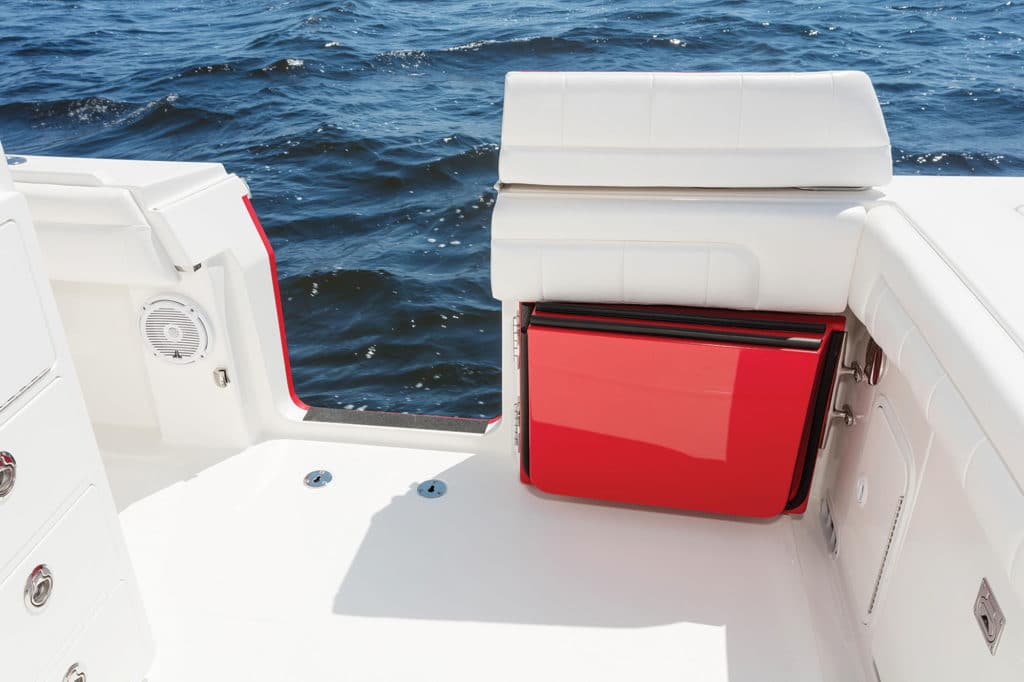
The Regulator 31 is a seasoned boater’s boat. Anyone can appreciate the subtle radius of the transom, the obvious attention to form and line in every accessory and piece of deck hardware, and the sexy curve of her rising sheer. But it takes experience in dicey weather to fully appreciate a boat that’s that much softer-riding, that much straighter-tracking when running down-sea, and that much drier-running with the wind abeam. It takes the harsh memory of fixing a clogged intake or replacing a fuel filter offshore to really appreciate the wide-open service access and robust systems installation.
I could go on, but if you’re an experienced angler, check out Regulator’s new 31, and let us know if you agree that the more you know about boats, the more you’ll find this boat to your liking.
Kevin Falvey is editor-in-chief of Boating magazine, a sister publication to Sport Fishing.
PERFORMANCE: POWER Twin Yamaha F300s LOAD 150 gal. fuel, 35 gal. water, four crew TOP SPEED 53 mph @ 5,700 rpm TIME TO 30 MPH 6.4 sec. BEST MPG 1.35 @ 26.4 mph (3,500 rpm)
HULL: LOA 36 ft. 5 in. BEAM 10 ft. 4 in. DEADRISE 24 deg. DRY WEIGHT 10,500 lb. DRAFT 2 ft. 1 in. FUEL 300 gal. MAX POWER 600 hp
MSRP $242,995 (w/ twin Yamaha F300s)
Regulator Marine Edenton, North Carolina 252-482-3837 regulatormarine.com

